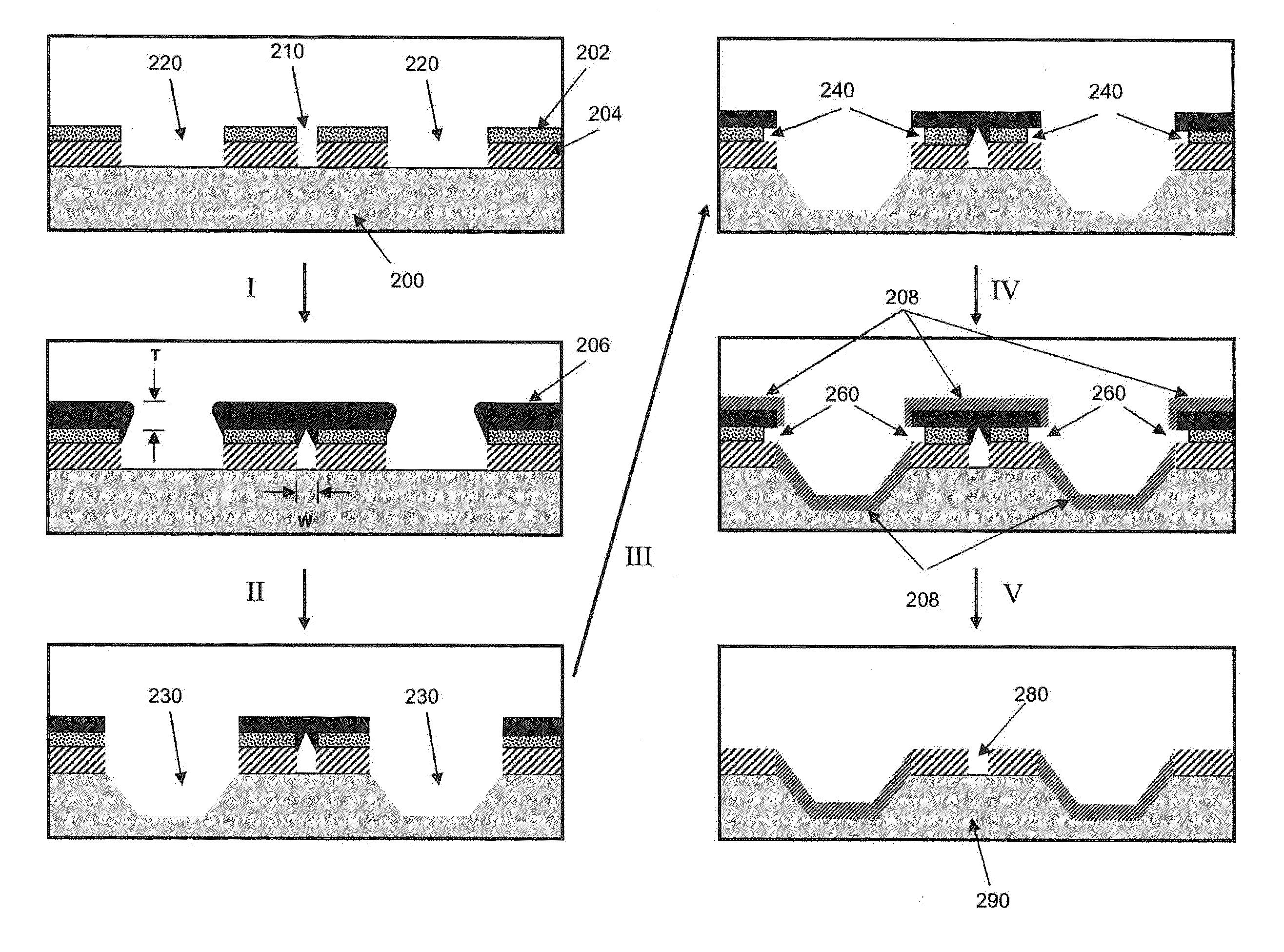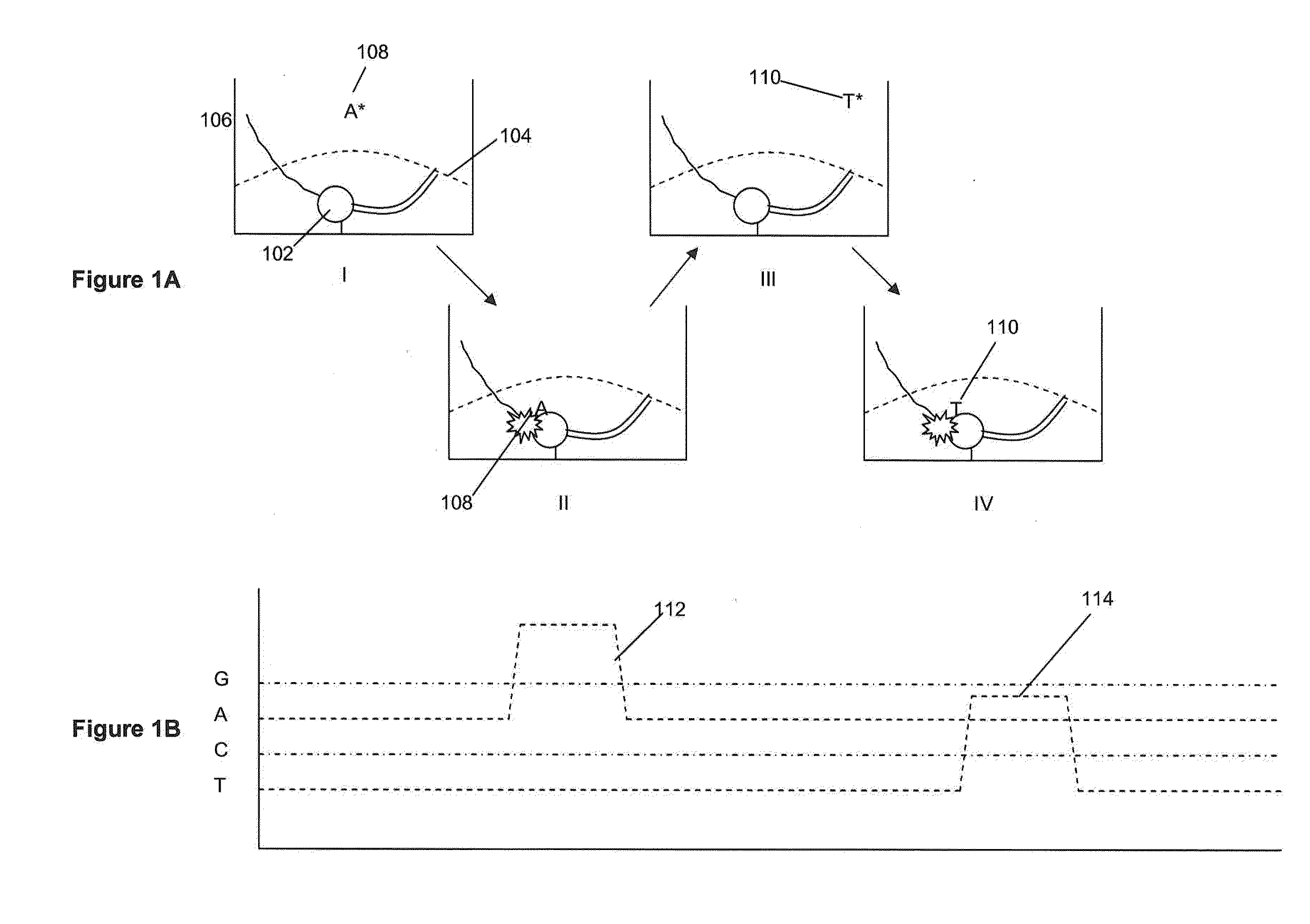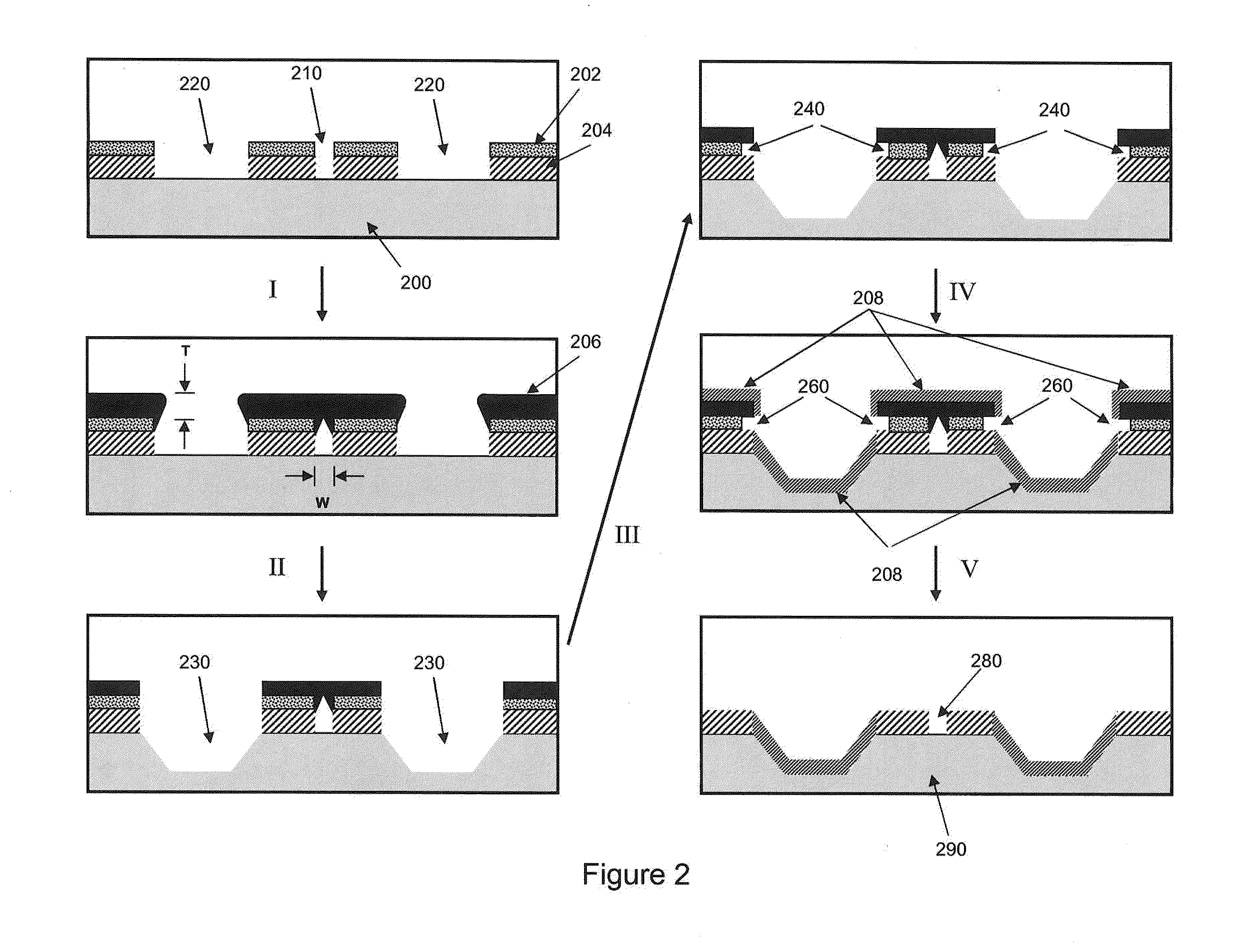Micromirror arrays having self aligned features
a technology of micromirror arrays and features, which is applied in the field of micromirror arrays having self-aligning features, can solve the problems of reducing the signal to noise ratio resulting from either or both of lower signals, and increasing the difficulty of multiplexing
- Summary
- Abstract
- Description
- Claims
- Application Information
AI Technical Summary
Benefits of technology
Problems solved by technology
Method used
Image
Examples
example 1
Micromirror Arrays
[0198]An array of micromirrors having nanoscale apertures on their tops was fabricated starting from a fused silica (FuSi) wafer using a process as described in FIG. 3A. First, 110 nm of aluminum was deposited at room temperature onto the FuSi. Onto the Fusi was deposited a 500 nm amorphous silicon hard-mask at 350° C., 0.9 Torr, and 60 W. The first lithography was done using a 490 nm thick photoresist in an asm1-PAS5500 DUV stepper. This step defined both the small features which will become the nanoscale apertures, and the large features which will define the micromirror protrusions. The hard mask was etched in a Centura platform using HBr=100 sccm, Cl2=60 sccm, RF=700 W, Bias=50 W, at 20 mTorr, followed by etching of the aluminum in the same system using Cl2=90 sccm, BCl3=45 sccm, RF=1000 W, Bias=100 W at 10 mTorr. The second, non-critical, lithography (step I) was done using 2 μm photoresist in the same stepper. Then the mirror was etched (step II) in Centura p...
example 2
Theoretical Modeling of Conical Mirror Substrates
[0202]Structures were modeled using the various components illustrated in FIGS. 18 and 19, respectively. For example, with respect to the straight conical structure illustrated in FIG. 18, dimensions were set as follows: d1=1.25 μm; d2=5 μm and h=4.69 μm. The model assumed that an objective lens used to collect emitted light from the substrate / reflector component has a numerical aperture of 0.5 with a highest collection angle of + / −20 degrees with respect to the optical axis, thereby providing a collection angle with respect to the bottom surface of the substrate of from 70 to 110 degrees. Based upon the conical model shown in FIG. 16, the ray angle that is reflected out of the cone is from 43.58 (⊖tr) to 105.52 (⊖br) degrees.
[0203]For the two staged conical reflector shown in FIG. 19, the dimensions were set to: d1=1.25 μm; d2=3 μm; d3=5 μm; h1=1 μm; and h2=3.69 μm. In this case, the ray angle that is reflected and comes out of the r...
example 3
Gain Measurements on Conical Micromirror Structures
[0205]Measurements were performed to determine the amount of gain that would be obtained from using micromirror structures coupled to zero mode waveguides. A substrate was prepared with FuSi having ZMW structures on the tops of micromirrors and having comparable ZMW structures on the planar portions of the substrate. FIG. 20 shows a schematic illustration of the experimental setup in which light is transmitted through the ZMW structures on the substrate. The light transmitted through the ZMW structures is collected with an optical train and detected on a CCD camera. The numerical aperture of the optical detection system was 0.5. Table 1 lists representative measurements of detected intensity from ZMW structures on the flat region of the substrate, and from ZMW structures on the tops of micromirror structures. The calculated gain from these measurements is about 5.9. It is understood that the measured gain will depend on the numeric ...
PUM
| Property | Measurement | Unit |
|---|---|---|
| thickness | aaaaa | aaaaa |
| thickness | aaaaa | aaaaa |
| thickness | aaaaa | aaaaa |
Abstract
Description
Claims
Application Information
 Login to View More
Login to View More - R&D
- Intellectual Property
- Life Sciences
- Materials
- Tech Scout
- Unparalleled Data Quality
- Higher Quality Content
- 60% Fewer Hallucinations
Browse by: Latest US Patents, China's latest patents, Technical Efficacy Thesaurus, Application Domain, Technology Topic, Popular Technical Reports.
© 2025 PatSnap. All rights reserved.Legal|Privacy policy|Modern Slavery Act Transparency Statement|Sitemap|About US| Contact US: help@patsnap.com



